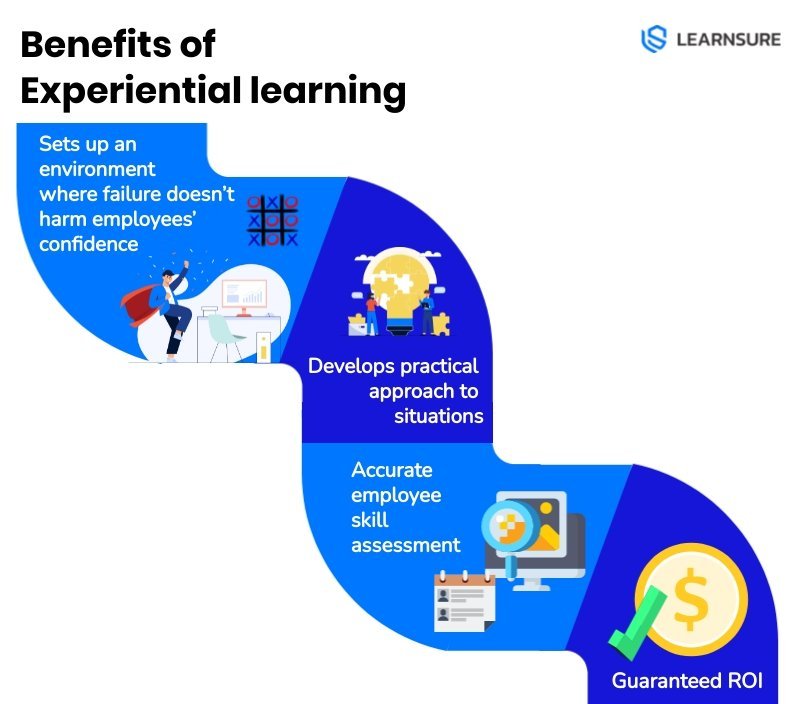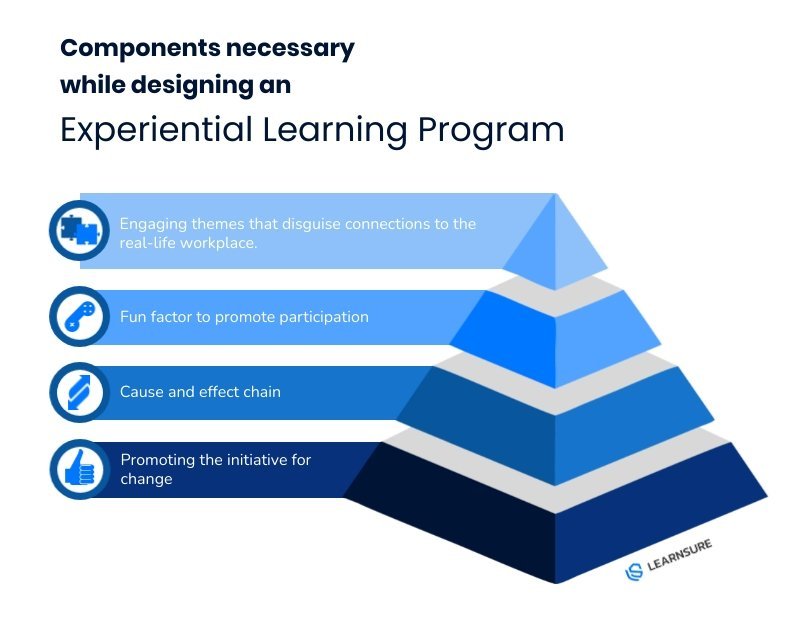Solving Real-Life Problems with Experiential Learning
Today’s business world is replete with setbacks that can hinder a company’s growth. In many cases, they occur due to improper employee learning and development, which will only result in them using improper ways to solve problems. When employees have a hard time addressing obstacles in the workplace, there’s often a cap on company potential and customer satisfaction.
Traditional methods of training employees are ineffective nowadays. You’ve got to turn to modern training strategies if you have a mind to teach your employees how to take on future challenges.
In this regard, one of the most useful approaches that you can take is experiential learning. Find out what that is, how it works, and how you can use it as a growth driver.
What Is Experiential Learning?
Experiential learning bridges the gap between various learning concepts and the real world. In many ways, it’s the learning of new skills through activities (usually with a set of goals). Participants are placed in situations with real-life contexts that they have to navigate themselves. At the end of these activities, they can reflect on their experience and develop practical ideas.
Today, experiential learning is a crucial part of business training solutions. It creates a unique learning experience that sparks conversation and refines problem-solving skills.
Over the past decades, traditional training methods haven’t proven as fruitful as initially hoped for. Without direct application, it’s all too easy for employees to forget or misunderstand many concepts. This has led to more and more leaders implementing experiential learning strategies.
Another positive of experiential learning is that it lies in the middle of business learning initiatives. It’s a compromise between isolated training methods and simulations. Participants learn by performing their daily jobs, though not necessarily an exact replica of the workplace.
For the best results, experiential learning programs must have the following components:
- Immersive experience and compelling metaphors that imitate real-world problems.
- Engaging themes that disguise connections to the real-life workplace.
- Fun factor to promote participation
- Objective results
- Cause and effect chain
- Promoting the initiative for change
- Result-based debriefing
It is the combination of these elements that leads to a promising learning experience. When participants are eager to engage, their confidence to take on their everyday challenges will increase.
How Does Experiential Learning Work?
Experiential learning works according to several principles. For starters, an engaging experience allows participants to take a break from their daily grind and have fun overcoming various challenges. They do not have to be made aware that they’re acquiring new skills, and this is where clever metaphors and themes can mask the primary purpose of the activities.
If you’re running on an accelerated timeline, you can quickly check out the results and help people learn from the entire experience. Finally, a detailed debrief links the activities to workplace situations. The learners get to see how they can apply their newly-acquired skills to various obstacles.
The result is behavior change caused by participants’ understanding of the consequences of applying their skills. Therefore, if they are to make mistakes, they will be more likely to take a different approach the next time. They’re going to reach conclusions about using various skills and their effects. For this reason, the retention rate is higher than with other training strategies, and skill development is more evident.
What Are the Benefits of Experiential Learning?
We’ve already mentioned a few ways that experiential learning can help your company. Here’s everything else that it can do for you:

Greater Capacity to Address New Situations
If your employees learn through a hands-on approach, they’ll be much more able to adapt to future situations. To illustrate this, let’s look at a study by the AACU (Association of American Colleges and Universities.) It had two student groups, one of which took an experiential learning program, whereas the second had direct instructions.
Although both groups achieved similar results in their final exam, the experiential learning group was better at practical assignments. Those participants outperformed the other group in drawing up a legislative policy. The ability to apply multiple aspects of their experiential learning gave them the edge over the other group.
In short, you can expect your employees to perform better if you inspire them to be innovative and use several skills to solve problems. With just instructions, you can expect subpar results and low customer satisfaction, making it so much easier for competitors to overtake you.
A Safe Environment
Failure can significantly harm your employees’ confidence. But if you set up an environment where failure doesn’t entail severe consequences, they can learn from their mistakes and improve on them. Simulations used in experiential learning sequences allow participants to fail safely. As a result, there’s no harm done to their confidence or any risk of poor performance in the workplace.
Accurate Skills Assessment
Compiling learning statistics can be challenging, even if it’s necessary. It gives you insights into how effective your learning methods are.
The same goes for experiential learning. An array of gamification and simulation programs can provide you with valuable feedback about the choices that your employees made in their learning activities. In turn, you can determine the skills that they capably demonstrated and those that will require more attention.
Superb ROI
Experiential learning takes place at your premises. This allows your employees to practice during their usual workflow. As a result, there’s less time spent at conferences, in boardrooms, or outside the office. Getting your employees to work on their skills on-site will almost invariably result in a higher ROI than sending them to learn someplace else.

Make a Wise Investment
Overall, experiential learning is one of the most practical ways of training your employees. It prepares them for future challenges by introducing them to real-life problems.
But if you don’t have all the necessary tools and knowledge, implementing experiential learning at your company is next to impossible – unless, of course, if you enlist the help of Learnsure. Our experts are well-versed in experiential learning and know just how to engage your employees. Using a technology-driven method, we can transform your learning environment for the betterment of your business operations.
We know all about the best workplace learning practices, from design thinking to microlearning. So, book your demo now and see our top-rated services first-hand!


